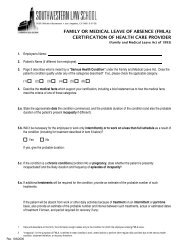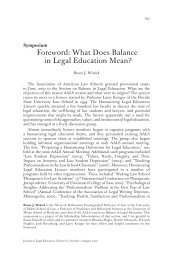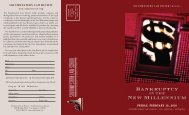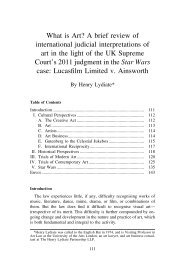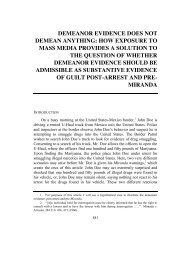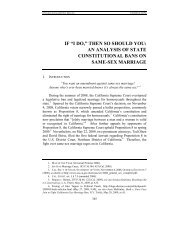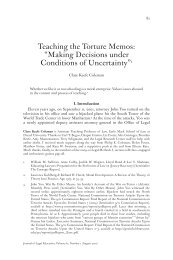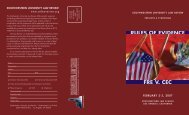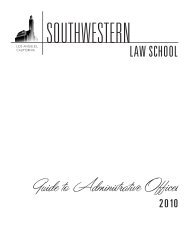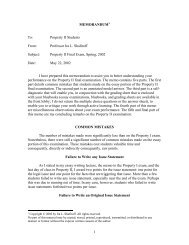An Autobiography of a Digital Idea - Southwestern Law School
An Autobiography of a Digital Idea - Southwestern Law School
An Autobiography of a Digital Idea - Southwestern Law School
Create successful ePaper yourself
Turn your PDF publications into a flip-book with our unique Google optimized e-Paper software.
490 Journal <strong>of</strong> Legal Education<br />
C. “Powering Up” in the Classroom<br />
Not only are students used to multitasking and telescoping, most <strong>of</strong> them<br />
spend time playing video games, IM-ing, emailing, and blogging. As a result,<br />
digital age students are used to being “powered up.” 28 Most students now bring<br />
laptops to the classroom and the computer screen is a natural environment<br />
for them to learn, be engaged and gather information. 29 However, powering<br />
up does not mean merely turning on the computer to stare at a screen, tap<br />
on a keyboard and move a mouse. Taking notes and watching PowerPoint<br />
slides are passive activities that do not engage these students. 30 Text alone<br />
<strong>of</strong>ten bores digital students. 31 Multimedia, such as computer graphics, video<br />
and animation, will help engage digital students by bringing material to life<br />
and helping them understand the context and relevance <strong>of</strong> the material to the<br />
“real world.” However, students need even more. They need their learning to<br />
be three-dimensional—not flat, linear or purely textual. They need interactivity<br />
where their minds (and screens) are turned on and working in overdrive. They<br />
need to become a part <strong>of</strong> the material through collaboration, interactivity, and<br />
simulation. 32 However, when they walk into a large lecture hall in law school,<br />
digital students tend to power down. 33 “Take a look at people walking into a<br />
classroom. They act like passengers boarding an airplane. They have revved<br />
down their own intellect. They are in passive mode.” 34 Without interactivity, 35<br />
students feel as if they have to “power down” 36 or worse, like the “airplane<br />
mode” on their cell phones, they turn <strong>of</strong>f their functioning for learning.<br />
D. Collaboration, Peer Review, and Interaction<br />
<strong>Digital</strong> students also crave peer review and interaction. Collaboration is<br />
at the heart <strong>of</strong> learning for them. 37 Learning is a social phenomenon as well<br />
as a cognitive process. 38 By bouncing ideas <strong>of</strong>f <strong>of</strong> each other, students can<br />
28. Marc Prensky, Engage Me or Enrage Me, Educause 60, 64 (2005).<br />
29. See Robert C. Berring, Thoughts on the Future: A Steroid-Enhanced Editorial, 15 Legal<br />
Reference Services Q. 1, 2 (1996) (referring to the keyboard and screen as more natural to<br />
these students than an index).<br />
30. See Sulentic, supra note 13; Leslie, supra note 13; see also Forman, supra note 13.<br />
31. See Carlson, supra note 5.<br />
32. For more information on simulations, see Clark Aldrich, Simulations and the Future <strong>of</strong><br />
Learning: <strong>An</strong> Innovative (and Perhaps Revolutionary) Approach to E-Learning (Pfeiffer<br />
2004).<br />
33. Id.<br />
34. Id.<br />
35. Donahoe, supra note 15.<br />
36. Prensky, supra note 28.<br />
37. Carlson, supra note 5; McGlynn, supra note 23.<br />
38. See John Seely Brown, Growing Up <strong>Digital</strong>: How the Web Changes Work, Education, and<br />
the Ways People Learn, Change 11, 14 (2000), www.aahe.org/change/.



